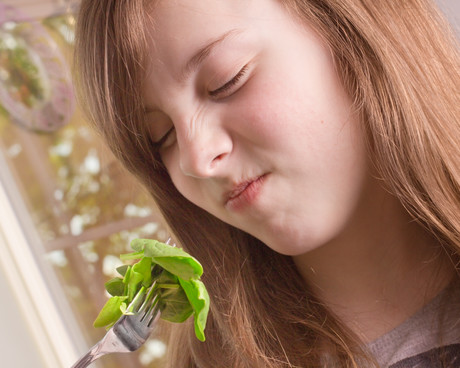How eating our greens led to the rise of antibiotic resistance

By recreating the evolutionary history of class 1 integrons — a class of DNA elements known to be a major player in the rise of antibiotic resistance — Macquarie University researchers have identified how these integrons first entered the human food chain 100 years ago.
“Class 1 integrons are genetic elements that play a major role in the global dissemination of antibiotic resistance because they can capture gene cassettes from a vast pool of resistance genes, and are resident on diverse mobile elements,” the scientists wrote in the journal PLOS ONE. They hypothesised that “a single environmental class 1 integron gave rise to the ancestor of clinical class 1 integrons, since these all share a highly conserved intI1 [gene] sequence”.
“In turn,” they said, “this implies that a single event resulted in the movement of one variant of the class 1 integron into the human microbiota. The descendants of this initial event have given rise to a pool of genetic elements that have successfully spread into diverse bacterial species, and are now universally present in the commensal bacteria of humans and their domesticated animals.
“Once this ancestral integron made its way into the human commensal or pathogenic flora, it was exposed to various selection pressures, eventually leading to the acquisition of more than 130 different resistance genes.”
The integron is likely to have originated inside a bacterial cell living on the surface of plants, the researchers claimed, as recently as 100 years ago. Driven by human activity, the integron has now invaded a diverse range of bacterial and animal hosts across every continent on Earth, including Antarctica, spreading to over 70 bacterial species of medical importance.
But how did the preclinical form of class 1 integrons make its way from the natural environment into the human microbiotia (gut bacteria) in the first place? According to the researchers, the most likely route was via water or foodborne bacteria. Bacteria that occur on foodstuffs that are eaten raw, or lightly cooked, were seen as particularly likely candidates.
The scientists set out to reconstruct the route taken by the integron by examining various foods, including leafy vegetables, for their potential carriage of integron-bearing bacteria. Ironically, they found that the culprit may well have been a vegetable which is usually known for its health benefits.
“We found these integrons in a particular bacterial strain isolated from baby spinach leaves, which provides a plausible route for transmission of environmental integrons into the human microbiota,” said Professor Michael Gillings, a co-author on the study.

Once resident in the microbiota, the study found, the possession of genes known to confer resistance to arsenic, mercury and disinfectants supplied both the integron and its bacterial host with a means of preferential survival, since all these agents of selection were in use before the antibiotic era. Coupled with the human misuse of antibiotics, this eventually led to integrons being able to pollute our food supplies and colonise wild and domesticated animals.
“When humans or animals consume antibiotics, 70% of that drug can be excreted as waste,” Professor Gillings explained. “Our waste management system isn’t able to filter out the metals, disinfectants or antibiotic agents. This waste helps select and maintain antibiotic-resistant bacteria in the environment. Consequently, the class 1 integron now pollutes all human-dominated ecosystems.”
These findings thus provide insights to help limit the current crisis in antibiotic resistance, with the researchers calling for more advanced monitoring and surveillance of the ways in which these resistance genes travel. They are also calling for set of standards regulating the release of metals, disinfectants, antibiotics and other agents into the environment — especially via human waste.
“By mapping the introduction and spread of antibiotic resistance, we hope to slow the spread of resistance by modifying how humans use and dispose of antibiotics,” Professor Gillings said.
Mini lung organoids could help test new treatments
Scientists have developed a simple method for automated the manufacturing of lung organoids...
Clogged 'drains' in the brain an early sign of Alzheimer’s
'Drains' in the brain, responsible for clearing toxic waste in the organ, tend to get...
World's oldest known RNA extracted from woolly mammoth
The RNA sequences are understood to be the oldest ever recovered, coming from mammoth tissue...





